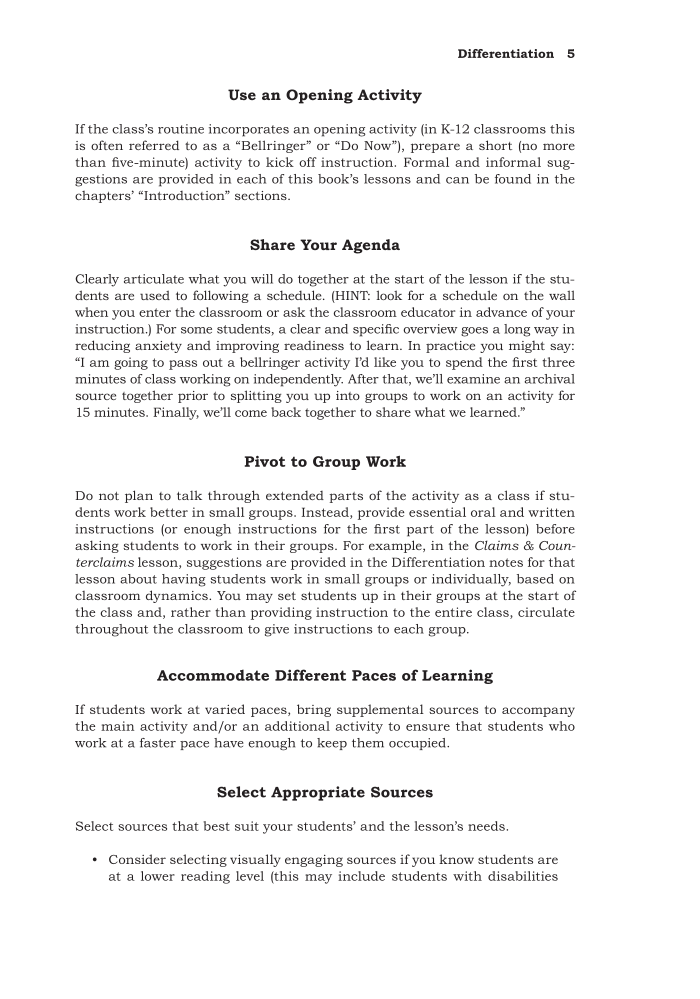Differentiation 5 Use an Opening Activity If the class’s routine incorporates an opening activity (in K-12 classrooms this is often referred to as a “Bellringer” or “Do Now”), prepare a short (no more than five-minute) activity to kick off instruction. Formal and informal sug- gestions are provided in each of this book’s lessons and can be found in the chapters’ “Introduction” sections. Share Your Agenda Clearly articulate what you will do together at the start of the lesson if the stu- dents are used to following a schedule. (HINT: look for a schedule on the wall when you enter the classroom or ask the classroom educator in advance of your instruction.) For some students, a clear and specific overview goes a long way in reducing anxiety and improving readiness to learn. In practice you might say: “I am going to pass out a bellringer activity I’d like you to spend the first three minutes of class working on independently. After that, we’ll examine an archival source together prior to splitting you up into groups to work on an activity for 15 minutes. Finally, we’ll come back together to share what we learned.” Pivot to Group Work Do not plan to talk through extended parts of the activity as a class if stu- dents work better in small groups. Instead, provide essential oral and written instructions (or enough instructions for the first part of the lesson) before asking students to work in their groups. For example, in the Claims & Coun- terclaims lesson, suggestions are provided in the Differentiation notes for that lesson about having students work in small groups or individually, based on classroom dynamics. You may set students up in their groups at the start of the class and, rather than providing instruction to the entire class, circulate throughout the classroom to give instructions to each group. Accommodate Different Paces of Learning If students work at varied paces, bring supplemental sources to accompany the main activity and/or an additional activity to ensure that students who work at a faster pace have enough to keep them occupied. Select Appropriate Sources Select sources that best suit your students’ and the lesson’s needs. • Consider selecting visually engaging sources if you know students are at a lower reading level (this may include students with disabilities
Document Details My Account Print multiple pages
Print
You have printed 0 times in the last 24 hours.
Your print count will reset on at .
You may print 0 more time(s) before then.
You may print a maximum of 0 pages at a time.























































































































































































